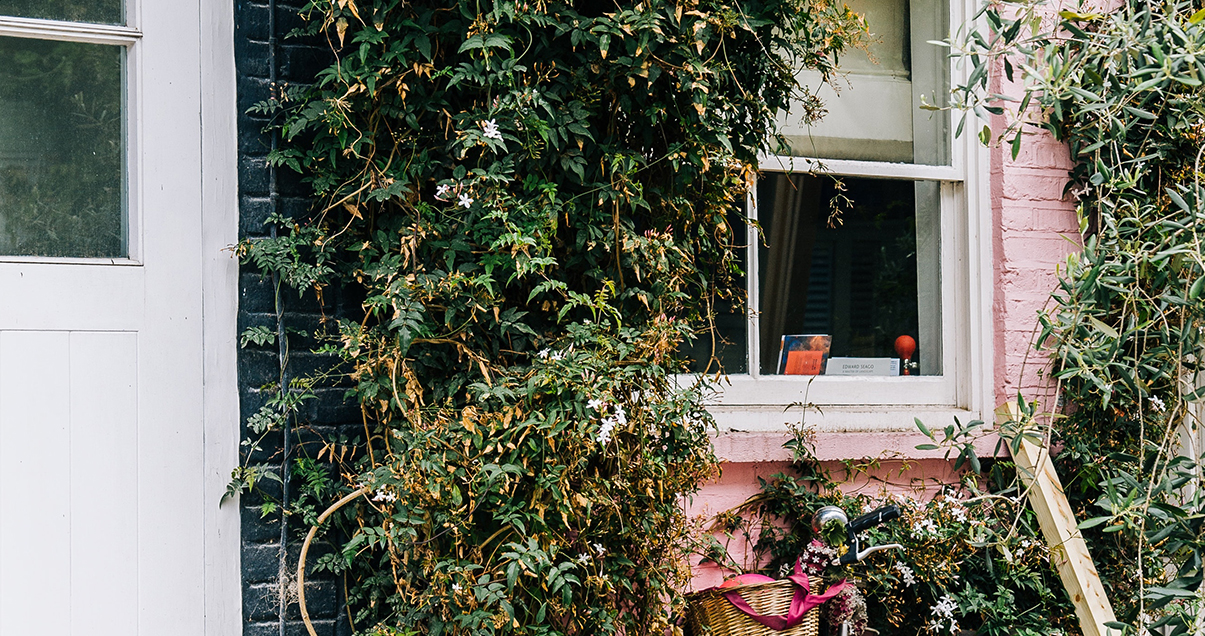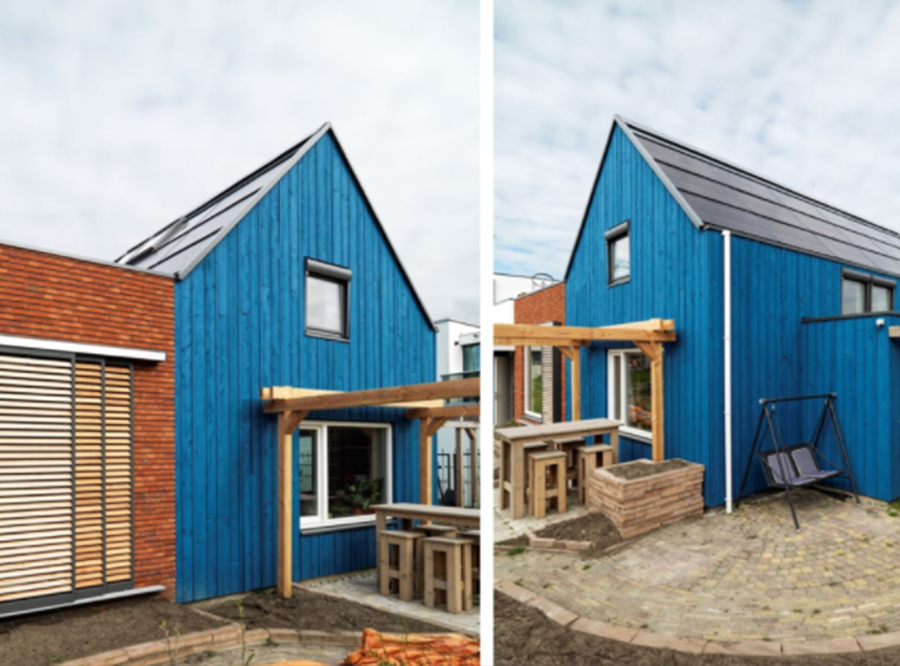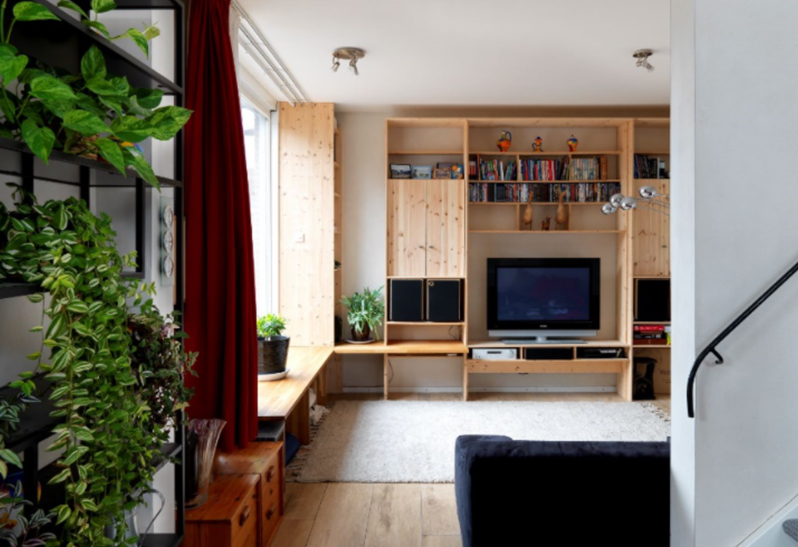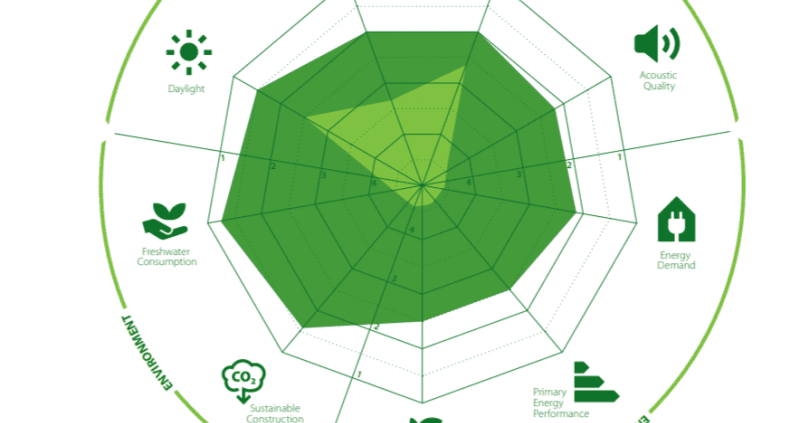Net Zero Homes

Anybody who has ever done construction or renovation work has stories to tell – of unreliable tradespeople, construction errors and skyrocketing costings. In a nutshell, building is already complex, expensive and stressful even without considering climate issues. At the same time, there are highly promising approaches for building a private home while taking climate protection into consideration. Net zero homes – what exactly does that mean?
„The construction and real-estate industry can make a major contribution to the achievement of climate targets.“
– German Sustainable Building Council (DGNB)
In the United Kingdom and Ireland, around 75 percent of the population lived in single-family homes in 2016. In Portugal, it was half, and in Austria, it was still a third. Despite the growth of cities, the dream of a little house in the countryside is widely held. In 2019, there were around 15.9 million single-family homes in Germany, with around 60 new ones being added every day. In the USA, the number of newly built single-family homes increased by 12 percent in 2020. Even in a country as small as Switzerland, almost 6,500 new single-family homes are built every year.
The ongoing boom in residential construction is hugely relevant for the climate. First, due to the rising global emissions in the construction sector, and second, because structures built today will probably still be standing in 20 to 30 years and therefore inevitably have an influence on the global carbon footprint. All in all, there is enormous climate protection potential here.
„Every building that is planned from now on must already be well on its way to climate neutrality – starting with energy neutrality.”
– Zero Energy Project
There are legislative initiatives for climate-friendly building worldwide. In the Canadian province of British Columbia, for example, the government has introduced the Energy Step Code, a five-step program according to which all newly built homes must demonstrate a net zero energy balance by 2032. According to the EU buildings directive, all new buildings must be designed as “nearly zero-energy” buildings from 2021, although the interpretation of the law is left to the member states.
In Germany, the Buildings Energy Act (Gebäudenenergiegesetz – GEG) has been decisive for the modernization of existing and new buildings since November 1, 2020. Its minimum standards primarily relate to energy consumption for heating and heat protection. Stricter requirements apply to government-subsidized KfW 55, 40 or 40 Plus efficiency homes, with the latter requiring homes to be able to generate and store their own power.
However, the regulations that are currently applicable are in no way sufficient for enabling compliance with the Paris climate protection agreement. Even though everybody is talking about climate justice, it barely plays any role at all in private home construction. This is indeed regrettable, but also highly understandable in view of the personal and financial burden that building a house represents in most cases.
 Source: Active House, www.activehouse.info
Source: Active House, www.activehouse.info Source: Active House, www.activehouse.info
Source: Active House, www.activehouse.info„The nearly zero or very low amount of energy required should be covered to a very significant extent by energy from renewable sources, including energy from renewable sources produced on-site or nearby“
– EU buildings directive
In most cases, purchasing or building a home marks a new chapter in your life – starting a family or adding to it, a career move or inheritance. These are emotional topics and times, and climate change is perhaps not at the top of your internal to-do list. In addition, home-builders probably underestimate the climate protection potential of their little house.
Anybody who still dares to tackle the topic must first master the technical jargon: eco-balance; efficiency house; primary, useful and end energy; insulation values; thermal bridges; etc. Consistent definitions? In your dreams. Because experts and a handful of idealists have been the ones to set the tone so far with regard to climate-neutral and sustainable construction, ways of thinking have become established that a lay person may find difficult to understand. Thus, when the energy requirements of a house are calculated, the power consumption of its occupants is generally left out in the cold. Aha. Hm… A look at the internet helps with comprehension issues only to a limited extent – as with many special topics, you find a variety of opinions that are presented all the more vehemently where there is a lack of available data.
„Building in a climate-friendly way means breaking habits.“
– Joost Hartwig
Anybody who wants to build in a climate-friendly way needs a dose of curiosity and a certain strength of character. “There are quite strong reservations concerning the topic of timber construction,” reported Joost Hartwig, Managing Director of the planning firm Ina Planungsgesellschaft, speaking from his own experience. “Many people feel as if these usually quite large investments in their life ought to last forever – and that a timber house somehow would not. At the same time, we’ve all seen very old timber buildings – so obviously this bias is wrong.” He believes conventions play a massive role. “The first generation of prefabricated houses from the 1970s still influences many people today,” said the planner. That leads to the contradiction: “We want to do something environmentally friendly, but we do not want to deviate from conventional buildings.” Clay plaster and hemp insulation, in turn, generally do not find favor straight away. Does it last? Do animals take up residence there? Climate-friendly building often involves a significant need for explanation.
„A climate-neutral building stock in Germany by 2050 is possible.“
– Federal Environment Agency
One way or another, it is worth considering how a house can be operated in a climate-neutral way in 2050 (or even better: from the outset). This means that its energy requirements will be completely covered by self-generated, renewable energy. This is the case with zero energy buildings. Calculations are made as an average for the year, meaning that it is possible to compensate for renewable energy from an external source that is added – such as green electricity or wood pellets purchased for heating during the winter – through overproduction elsewhere or at a different time. The enhancement – a house that more than makes up for its CO2 emissions – is referred to as a plus energy building.
One person who “makes a significantly positive contribution to climate protection” in a creative way is Dietmar Geiselmann. His home in Freising, Bavaria, achieves a negative CO2 balance over the year – according to the strict criteria of the DGNB – including the energy consumed by the residents.
The Getting To Zero Forum, an alliance of two clean-energy NGOs and the New York State Energy Research and Development Authority, shows exemplary zero energy single-family homes in various states in the U.S. on its website. Solar nerd Dale, himself the proud owner of a photovoltaic roof in New York State, showcases a variety of zero energy single-family homes in his blog.

Is that all – is it really that easy to make a house climate neutral? Unfortunately not.
After all, a zero energy or plus energy building is still a long way from being climate neutral in the sense of having completely balanced greenhouse gas emissions. A building is truly climate neutral only when it causes as many or fewer greenhouse gas emissions relative to what it saves over its entire service life or compensates for them by generating renewable energy. And this equation packs a punch, because the service life of a building begins with its construction, and construction begins with obtaining raw materials for its foundations – an almost endless chain of climate-damaging activities. All of their CO2 emissions must subsequently be compensated for, whereby climate-friendly construction, building materials and logistics have a positive influence on the eco-balance.
„In principle, the environmental impact of a building in terms of production and disposal is not regulated in Germany,” explained Joost Hartwig, Managing Director of the Ina Planungsgesellschaft. “So it can consume and emit as much as it wants during construction. The emissions accumulated by the first day of occupation equate to between 20 and 30 years of operation even by today’s high efficiency standards. So I emit enough for the next 20 years in one go, just so that I can put up a new house. There you can see already that somehow the wrong things are being promoted.“
„We must look at the entire lifecycle of a building instead. I mean construction, use, maintenance and dismantling“, explained Wolfgang Stumpf, course leader at the Department for Building and Environment at the Danube University Krems and a member of building lifecycle initiative IG Lebenszyklus Bau.
„It has great dynamism worldwide.“
– Felix Jansen, DGNB
In holding this view, the two experts are part of an international movement that believes more stringent standards are required in the interests of the climate goals. The building materials industry has also acknowledged its key role in the fight against climate change. In a panel discussion with high-quality participants, the ReConstruct research platform made climate-neutral construction a subject of discussion, while a brochure addresses the necessary transformation of the industry along with its products and processes.
The German Sustainable Building Council (DGNB), known for its sustainability certification system that is now used in 27 countries, is consciously hurrying on one step ahead of the legal requirements. The current evaluation system is thus already offering the option of balancing the construction and operation of a building. There are bonus points for adaptability, land and material recycling and other aspects of the circular economy.
Similarly, the Austrian Sustainable Building Council (ÖGNB) has extensively revised its klimaaktiv 2020 set of criteria. According to this, coal, oil and gas heating systems are no longer permitted at all in newbuilds and renovations and suitability for dismantling and recycling have been added as new criteria.
„Healthy buildings for people and planet“
– Active House Alliance
The Active House Alliance also wants to reduce the negative effects of construction activities on the climate to the lowest possible level. Its evaluation system that was recently recognized by the Architectural Society of China relies on voluntary commitment: Architects and clients assess their aspiration level in the three areas of comfort, energy and environment themselves and verify implementation on the basis of indicators. Projects such as the blue house in Erasmushove or the renovation of the Ukrainian forest house demonstrate how stylish sustainable architecture using wood, clay, photovoltaics and recyclable components can be.
Until this globally discussed, comprehensive definition of climate-neutral construction has manifested in laws, the net zero home will be a voluntary commitment just like buying regional, seasonal and organic foods. Inspiration can be drawn from the dream houses of pioneers and idealists as well as from competitions and certification platforms. When it comes to individual implementation, there are a thousand options for doing it better. Anybody who does what is right within their own budget deserves the thanks of future generations. And anybody who has been in a bathroom plastered with clay in the first place and experienced the mirrors not misting up despite a steaming tub is convinced by the natural indoor climate anyway.


